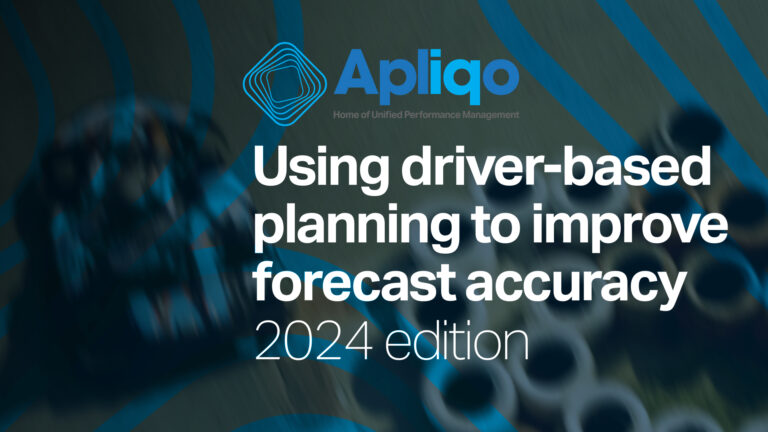Forecasting and planning in complex environments requires a delicate balance between attention to the granular details and a bigger-picture view of what we’re actually trying to accomplish. We’ve written before about how traditional budgeting and forecasting tend to get stuck in the weeds, resulting in an incredibly frustrating and time-consuming process for everyone involved. And the question we asked in that post was – where is the value actually being created?
While it can seem intellectually stimulating to drill each forecast metric right down to its most atomic version, it doesn’t seem to drive results. Veteran Office of Finance professionals agree that it just ends up creating more clutter. That’s because the data acquisition process only helps gather data and numbers. It doesn’t, however, provide any insight into what drives that data.
Sophisticated forecasting and planning eschew that busywork and instead focus on the key drivers that are driving your company’s performance so that you can leverage your time effectively and arrive at accurate forecasts without having to turn your whole organisation upside down to get them.
How do you identify the key drivers?
Of course, the success of this sort of driver-based planning relies on you being able to identify the key drivers of performance within the company. Some of these are self-evident and are relatively general across all industries such as unit prices, transaction volumes, margins, and so on. It’s good to start with these because they are the heartbeat of your profit-generation efforts. But then you also want to augment these with more specific drivers that are unique to your specific situation.
In many cases, identifying the more specific key drivers can come down to trial and error. With an advanced FP&A tool like Apliqo FPM, you can run various scenarios and see just how changes to drivers affect the key metrics you care about. The demo below, for example, shows how the software allows you to get up to speed very quickly with several standard in-built forecasting methods, and then adjust and tweak them for more accuracy.
Often our clients are surprised by how easy and intuitive this can be when they experiment with their data and see that a small number of inputs are making the vast majority of impact on the bottom line. It’s the Pareto principle at work, and it cuts through so much of the noise.
Driver-based planning is a continuous process
Another key insight that many companies miss is that your planning and forecasting should be a continuous process and not one that only happens at the beginning of a financial year. We all know this instinctually because of how fast the business environment shifts and changes over a year, but we often feel stuck with our original forecast because it took so much time and effort to put together and we can’t afford to dedicate those resources again and again throughout the year.
This is another example of where traditional planning and forecasting fail us. By wasting our efforts on unnecessary details we disincentivise the continuous improvements that our forecasting requires. In a previous post on rolling forecasts we explored how in a driver-based planning environment, we can use rolling forecasts on our key drivers to ensure that our planning is undergoing constant review and change to provide a more informed and realistic picture. Because the nature of the forecasting is not as strenuous, we actually arrive at more accurate forecasting that is timely and aligned with the current goals and circumstances of the organisation, not the ones that were in place 6-12 months ago.
The agility this offers is difficult to understate. When combined with scenario analysis and some of the other advanced forecasting tools available in the Apliqo UPM software suite, you can drastically improve the quality of your planning without taking focus and resources away from the core competencies of the business.
Eliminating complication for its own sake
To sum up what we’ve explored in this post, planning and forecasting should not be complicated for its own sake. There’s a tendency to think that if we can get every single number right, at every level of the organisation, then the final result will be the most comprehensive and accurate version that we’re capable of. But while this seems like a noble goal, it’s simply not practical and it gets in the way of sophisticated planning cycles that can adapt and adjust to reality.
Companies should let go of this idea and instead focus on the key drivers that actually move the needle because they’ll get almost all of the accuracy for a fraction of the effort committed to the process. In addition, it then allows for rapid iterations over time which is far more valuable to an organisation than one incredibly complicated, but static, snapshot in time.
This is why we preach driver-based planning as the key planning methodology to go for, and it is why all our software is built around the tenets of this approach.
If you would like to dive deeper into this topic and understand how you can use it to improve your planning (and save yourself some headaches along the way) then be sure to check out our short product demonstration for a practical example, and a webinar recording where we shared how to integrate this thinking into your wider FP&A workflows.







